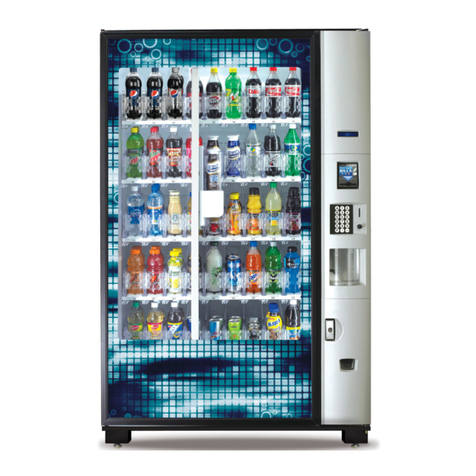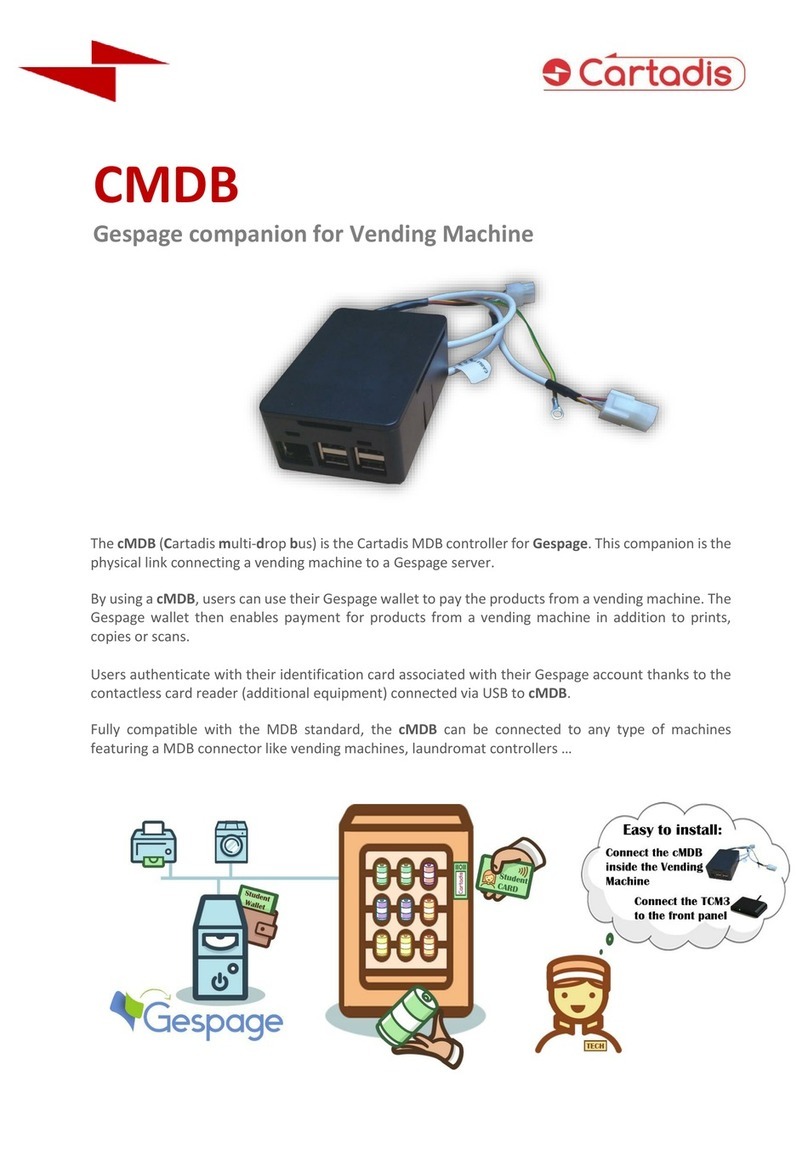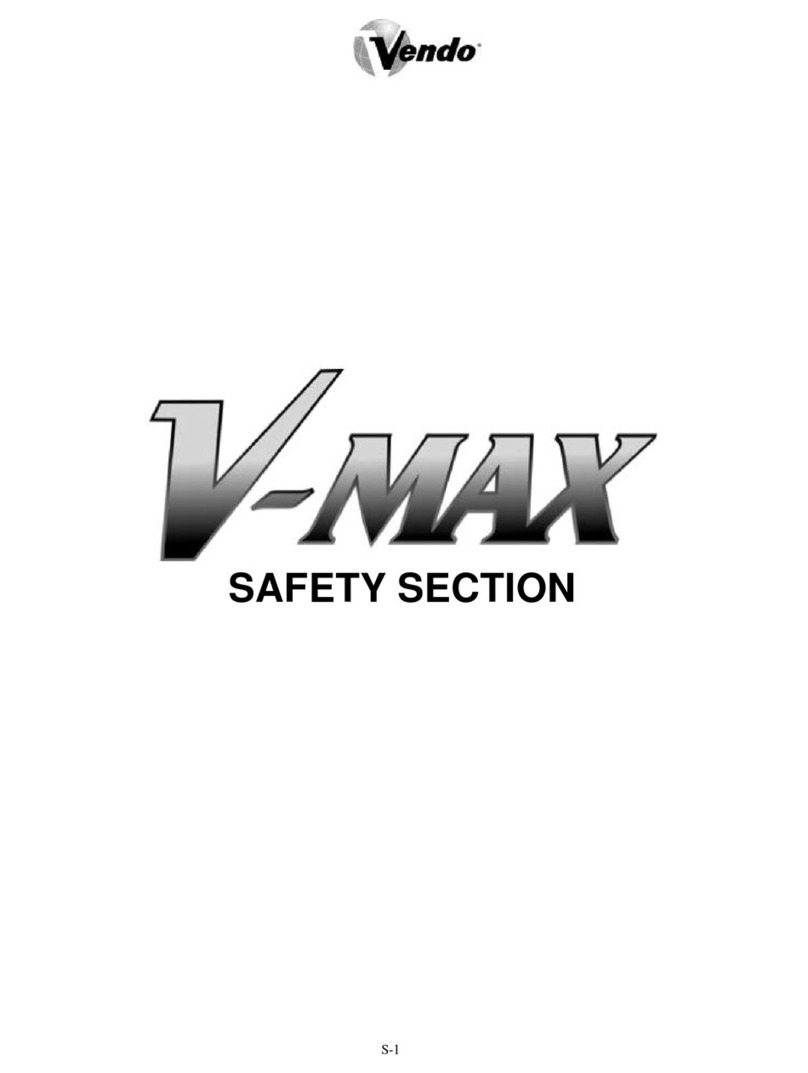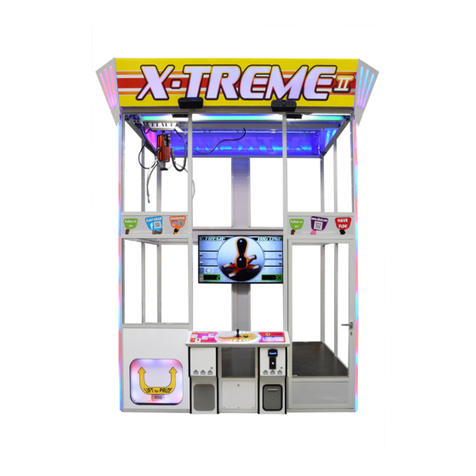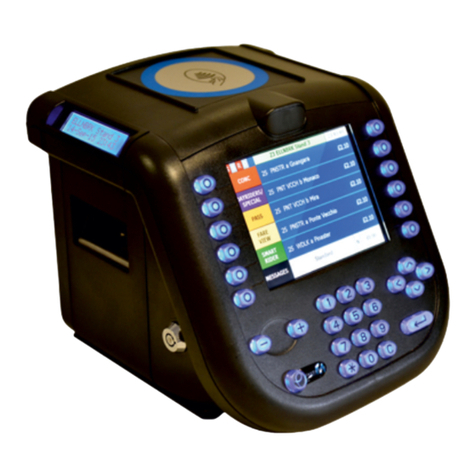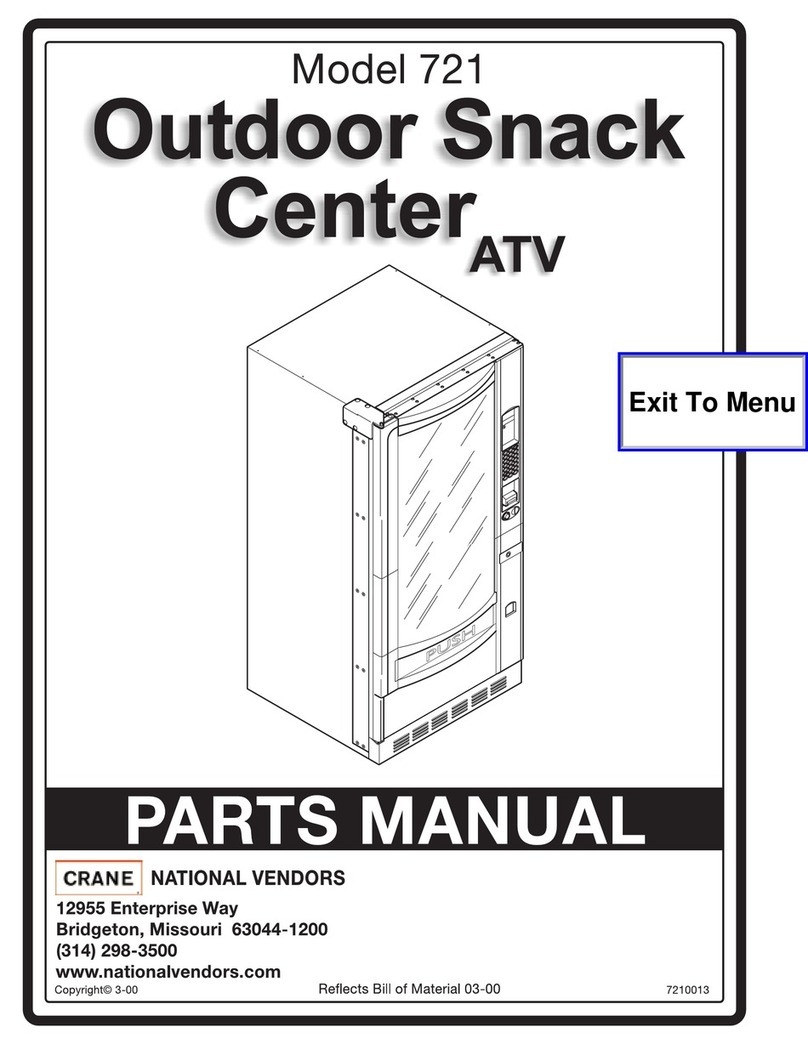Thames & Kosmos 550104 User manual

I
Scan ths QR code to vew
a step-by-step assembly
vdeo and tps on how to
buld and use the
andy Vendng Machne
EXPERIMENT MANUAL
Candy Vending
Machine
Franckh-Kosmos Verlags-GmbH & Co. KG, Pfizerstr. 5-7, 70184 Stuttgart, Germany | +49 (0) 711 2191-0 | www.kosmos.de
Thames & Kosmos, 89 Ship St., Providence, RI, 02903, USA | 1-800-587-2872 | www.thamesandkosmos.com

Coins (quarters, dimes, nickels,
pennies), optional: screws or
nails to hang on the wall
You will also need:
C
o
o
l
e
s
t
KIT CONTENTS
What’s inside your experiment kit:
Checklist:
No. Description Qty.
P1 Base bottom 1
P2 Base top 1
P3 Cardboard header 1
P4 Coin holder 1
P5 Slider base 1
P6 Prize window 1
P7 Coin sorter 1
P8 Coin funnel, front 1
P9 Coin funnel, back 1
P10 Coin ramp 1
P11 Coin ramp cover 1
No. Description Qty.
P12 Foot 2
P13 Prize door coin slot 4
P14 Prize door button stopper 4
P15 Prize door button 4
P16 Prize door 4
P17 Spring 4
P18 Bell 2
P19 Pegboard ramp, medium 2
P20 Pegboard randomizer 2
P21 Pegboard pendulum arm 1
P22 Pegboard bumpy ramp 2
No. Description Qty.
P23 Pegboard ramp, long 1
P24 Coin wheel, front 1
P25 Coin wheel, back 1
P26 Pegboard spinner 1
P27 Sticker sheet 1
P28 Soda bottle gummy 10
A1 Pegboard half circle 2
A2 Bell peg 2
A3 Peg 2
A4 Spinner peg 2
A5 Coin wheel crank 1
A6 Pegboard coin catch 1
A7 Key 1
A8 Lock, front 1
A9 Lock, back 1
Do you have any questions or are you
missing any parts? Our tech support
team will be happy to help you!
or 1-800-587-2872
Good to know!

– You must carefully cut the plastc parts out of ther frames
wth dagonal cuttng plers (dagonal cutters) or scssors
– Remove the parts from the frames only when they are needed.
– Remove excess material (burrs) from the parts before assembling them.
Normal scissors do not cut as precisely as diagonal cutters, so if you only have
those, you may need to file some of the rough edges down with a nail file or
sandpaper.
– Assemble everything in the order shown. Don’t jump ahead!
I
O
r
N
t
I
p
S
1
Candy Vending Machine
TABLE OF CONTENTS
Kit Contents ..................................... Inside front cover
Table of Contents, Safety Information, and Tips ........ 1
Introduction ................................................................ 2
ASSEMBLY STARTS ON PAGE 3
Candy Vending Machine Assembly ..................... 3
Candy Vending Machine Experiments ............... 13
Math with Money ...............................................16
Cool Vending Machines .............. Inside back cover
T
Additional information
can be found
on page
16 and the Inside
back cover.
550104-02-290422
Not suitable for
children under 3 years.
Choking hazard —
small parts may be
swallowed or inhaled.
Keep the packaging
and instructions as
they contain important
information.
Refer to the packaging
for the nutritional
information and the
ingredients list for the
gummy candies.
!
!
WARNING
Children as young as eight years
of age can enjoy experimenting
with the built Candy Vending
Machine, but most children
under ten will need some help
building it. Regardless of their
age, please support your child
with advice and a helping hand,
especially during tricky
assembly steps. Before
beginning, read the instructions
together and discuss the safety
instructions.
To prevent damage to the
work surface on which your child
is building, provide them with a
mat or other surface protection.
When cutting the plastic parts
out of the frames with the
diagonal cutter or scissors,
special care must be taken, not
just because of the sharp edges
on the tools, but also because
the plastic parts can yield sharp
edges or burrs. These can be
removed with the help of the
diagonal cutter or a nail file.
Supervise your child when they
are using the sharp tools until
you trust that they can handle
the tools independently.
We hope you and your child
have a lot of fun building and
playing with the Candy Vending
Machine!
17
16
18
19
20
P4
P3 P18
x2
A2
P21
A4
P26 A4
Place key here
when you’re not
using it.
CANDY VEND ING MACHINE AS SEMBLY
1312
Candy Vending Machine Experiments
EXPERIMENT 1
1. Place a quarter in the coin slot at the
top of the machine and turn the
crank. Which pri ze door does the
quarter fall behin d?
Place the 25 ¢ sticker on that prize
door button.
2. Repeat for dime (10 ¢), nickel (5 ¢),
and penny (1 ¢).
3. Add the rest of the stickers to the
machine.
When the new United States government
established coins in the 1790s, the basic unit
was the silver dollar, which was actually made of silver. The half-
dollar, the quarter, and the dime were also made of silver. The dime had to
be very small because it contained only one tenth of the amount of silver in
a silver dollar. The penny and the nickel were introduced later. The U.S. Treasury decided
to make these new coins out of cheaper metals: copper for the penny, and nickel for the
nickel, so they could be larger and wouldn’t get lost in people’s pockets.
So why is a dime
smaller than a nickel
and penny, even though
it’s worth more money?
How does the coin sorter
work? Look closely at the
back of the machine, at
part P7. What do you
notice about the holes?
The holes get progressively
bigger. Take a nickel (5 ¢)
for example. As the nickel
rolls down P7, it is too big
to fall through the first and
second holes. but when it
gets to the third hole, it
falls right throug h.
W
h
a
t
’
s
h
a
p
p
e
n
i
?
EXPERIMENT 2
1. Turn the coin wheel crank until the
number 1 is lined up with the coin
slot at the top of the machine.
2. Place a coin in the coin slot, then
rotate the coin wheel cran k
clockwise. W here does the coin
come out?
3. Repeat steps 1 and 2 with different
coins. What do you notice?
4. Repeat steps 1 and 2, first lining up a
different number on the coin cr ank.
At the top of the machine, you can use the numbers on
the coin wheel to determine which slot the coin will
drop out of. How does it work? Look closely at the back
of the machine. Part P10 has four tracks for the coin to
travel in. The track is determined by where t he coin is
placed in the coin wheel. To understand this
mechanism, slowly rotate the coin wheel crank as you
watch the back of the machine.
W
h
a
t
’
s
h
a
p
p
e
n
i
?
When you are finish ed with
the experiment s on pages
13 – 15, you can hang the
Candy Vending Mach ine on
the wall.
First remove the fee t. Then
hold the machine level
against the wall wh ile you
make pencil marks in the
centers of the two loops
at the top of the machine.
Install screw s or hooks on
those marks. Fi nally, hang
the Candy Vending Mach ine
on the supports .
Dear parents and adults,

I :
I
I :
I I I
I I I
I I I
I :
I
I:
I
I
I?
:
:
I
I I I
I :
:
I :
I
I
I I
I
I :
I
I
I
I:
I
I I I
:
I
I
I
I
:
2
INTRODUCTION
You have probably seen vending machines that sell all sorts of things, from soda
and snacks to electronics. Most vending machines exist in public places, and
dispense goods without needing a store clerk to sell them. The money that enters
the vending machine remains there until a vending machine technician comes to
collect the money.
With this kit, you can build a mechanical vending machine that dispenses
candy or other small prizes. Your machine requires no electricity or electronics
— just simple machines and the power of your hand. You are both the customer
and the technician! Your coins are automatically sorted and saved in the bank at
the back of the machine. The best part? Change up the pegboard to create
endless combinations of stunts and tricks. And you can learn cool engineering
and physics concepts along the way.
Candy Vending Machine

P1
1
2
P12
P12
x4
x4
P14
I
Scan this QR code to view
a step-by-step assembly
video and tips on how to
use the Candy Vending
Machine.
3
Candy Vending Machine
CANDY VENDING MACHINE ASSEMBLY Ready?
Let’s get
building!

3x4
P15 P17
4
3
1
2Push and hold the prize door
button (P15) all the way in while
you install P13 in the back of
the machine.
Turn around.
P13
Repeat 3 more times.
Pay attention to the
orientation of P13:
P15
4
CANDY VENDING MACHINE ASSEMBLY
4

3x4
P15 P17
4
3
1
2Push and hold the prize door
button (P15) all the way in while
you install P13 in the back of
the machine.
Turn around.
P13
Repeat 3 more times.
Pay attention to the
orientation of P13:
P15
4
5
6
click
x4
Push and hold the prize door button
(P15) all the way in while you install
P16 in the back of the machine.
P16
Pay attention to the orientation of P16:
A8
A9
A9
A8
5
Candy Vending Machine

7
8
P5
P7
click
x4
After adding P5, make sure the
lip of P13 sits outside P16 on all
four prize doors. You may need
to make adjustments if P13 has
slid below P16.
P13
P16
Add P5 as shown.
CANDY VENDING MACHINE ASSEMBLY
6

7
8
P5
P7
click
x4
After adding P5, make sure the
lip of P13 sits outside P16 on all
four prize doors. You may need
to make adjustments if P13 has
slid below P16.
P13
P16
Add P5 as shown.
9
P9
click
Make sure that P9 is securely clipped into
place in P1 (there are five clips). Also make
sure that the edges of P9 are flush with P1.
7
Candy Vending Machine

10
P8
CANDY VENDING MACHINE ASSEMBLY
8

11
P6
Turn the key
90° clockwise
to lock.
If you lose the
key, you can
use a flathead
screwdriver.
A7
90°
9
Candy Vending Machine

13
12
P10
A5
P11
P24
P25
The notch in P24 aligns
with the groove in P25.
P2
click
click
CANDY VENDING MACHINE ASSEMBLY
10

click
15
14
Press gently until the
coin wheel assembly
clicks into place.
Make sure these
two tabs click
into place.
click
click
From the back, slide the top
half onto the bottom half.
11
Candy Vending Machine

17
16
18
19
20
P4
P3 P18
x2
A2
P21
A4
P26 A4
Place key here
when you’re not
using it.
CANDY VENDING MACHINE ASSEMBLY
12
When you are finished with
the experiments on pages
13 – 15, you can hang the
Candy Vending Machine on
the wall.
First remove the feet. Then
hold the machine level
against the wall while you
make pencil marks in the
centers of the two loops
at the top of the machine.
Install screws or hooks on
those marks. Finally, hang
the Candy Vending Machine
on the supports.
OPTIONAL STEP

13
Candy Vending Machine Experiments
EXPERIMENT 1
1. Place a quarter in the coin slot at the
top of the machine and turn the
crank clockwise. Which prize door
does the quarter fall behind?
Place the 25 ¢ sticker on that prize
door button.
2. Repeat for a dime (10 ¢), a nickel (5 ¢),
and a penny (1 ¢).
3. Add the rest of the stickers to the
machine. Refer to the box.
When the new United States government
established coins in the 1790s, the basic unit
was the silver dollar, which was actually made of silver. The half-
dollar, the quarter, and the dime were also made of silver. The dime had to
be very small because it contained only one tenth of the amount of silver in a
silver dollar. The penny and the nickel were introduced later. The U.S. Treasury decided
to make these new coins out of cheaper metals: copper for the penny, and nickel for the
nickel, so they could be larger and wouldn’t get lost in people’s pockets.
So why is a dime
smaller than a nickel
and penny, even though
it’s worth more money?
How does the coin sorter
work? Look closely at the
back of the machine, at
part P7. What do you
notice about the holes?
The holes get progressively
bigger. Take a nickel (5 ¢)
for example. As the nickel
rolls down P7, it is too big
to fall through the first and
second holes. but when it
gets to the third hole, it
falls right through.
W
h
a
t
’
s
h
a
p
p
e
n
i
?
EXPERIMENT 2
1. Turn the coin wheel crank until the
number 1 is lined up with the coin
slot at the top of the machine.
2. Place a coin in the coin slot, then
rotate the coin wheel crank
clockwise. Where does the coin
come out?
3. Repeat steps 1 and 2 with different
coins. What do you notice?
4. Repeat steps 1 and 2, first lining up a
different number on the coin crank.
At the top of the machine, you can use the numbers on
the coin wheel to determine which slot the coin will
drop out of. How does it work? Look closely at the back
of the machine. Part P10 has four tracks for the coin to
travel in. The track is determined by where the coin is
placed in the coin wheel. To understand this
mechanism, slowly rotate the coin wheel crank as you
watch the back of the machine.
W
h
a
t
’
s
h
a
p
p
e
n
i
?

14
EXPERIMENT 3
1. Set up the pegboard as shown to the
right.
2. Feed a coin into the #3 slot. Does it
hit the bell? Now try feeding a coin
into the #2 and #1 slots.
What do you notice?
1. Now experiment with feeding coins
with different masses (quarter, dime,
nickel, penny) into the same slot.
What do you notice?
Experiments 4 and 5 demonstrate the properties
of projectile motion. Coins that start at the top of
the ramp build up speed as they roll down the
ramp. By the time they get to the bottom of the
ramp, coins that drop out of slot #1 are going
faster than coins that drop out of slot #3. This
horizontal speed remains constant, so the coins
that drop out of slots #1 and #2 have enough
speed to carry them to the left to hit the bell.
In the 16th century in Italy,
Galileo Galilei performed
an experiment: he dropped
two spheres of dierent
masses from the top of the Leaning Tower of Pisa.
Both spheres hit the ground at the same time,
which demonstrated that all objects fall to Earth
with the same acceleration. That is the
explanation for what you see in experiment 5.
W
h
a
t
’
s
h
a
p
p
e
n
i
?
No coin, no candy! To understand the prize door
mechanism, watch the back of the machine as you
repeat steps 2 and 3 in slow motion. You might
need to repeat several times to figure it out.
W
h
a
t
’
s
h
a
p
p
e
n
i
?
1. Use the key to unlock the prize
window, then fill each prize area with
a gummy soda bottle candy or other
prize. Then close and lock the prize
window.
2. Before placing a coin in the machine,
press one of the prize door buttons.
Does the prize come out?
3. Now put a coin in the machine. When
the coin reaches the bottom, press
the prize door button where the coin
landed. What happened?
What’s going
on here?
EXPERIMENT 4
EXPERIMENT 5

15
EXPERT SETUP #1
Candy Vending Machine Experiments
EXPERT SETUP #2
CHALLENGE #1:
CHALLENGE #2:
CHALLENGE #3:
Use the pegboard pieces to
create the slowest track
possible. Use a
stopwatch and
compete with your
friends to see who can
maximize the time it
takes for a coin to reach
the prize door coin slot.
Design a track where the
coin hits both bells on the
way down. Can you make
a track where this works
for all coins, no matter
which slot they drop from?
Create an impossible
track! Frustrate your
friends and family by
setting up a track that does
not allow coins to reach
the prize slots, no matter
where they start from.

Math with Mey
Many ways ma a doar
There are many ways to make a dollar, and learning them will
teach you about fractions, percentages, addition, subtraction,
multiplication, and division.
“Quarter”
25 cents
$0.25
1
4doar
4 quarters
add up to $1
“dime”
“Nicl”
“Penny”
1 cent
$0.01
1
100 doar
10 cents
$0.10
1
10 doar
5 cents
$0.05
1
20 doar
$0.25 x 4 = $1.00
10 dimes
add up to $1
20 nickels
add up to $1
100 pennies
add up to $1
$0.10 x 10 = $1.00
$0.05 x 20 = $1.00
$0.01 x 100 = $1.00
Oer
mbino?
+++=
2(.10) + .25 + 6(.05) + 25(.01) =
$1.00
How many other ways
to make a dollar can
you think of?
16
Working with money is a great way to learn about many dierent
math operations. Coins represent fractions of dollars. For example,
a quarter, which is worth 25 cents, gets its name from being one
quarter (1/4) of a dollar. That means four quarters add up to one
dollar. Because a dollar is equal to 100 cents, the fractions
represented by coins translate nicely to percentages. A nickel, which is
worth five cents, is 5% of a dollar. You can practice your addition and subtraction skills by making
change, like a cashier does at a store. As you stack up change in the coin holder at the back of the
Candy Vending Machine, use your skills to figure out how much money you have.

Candy Vending Machine
?
CHECK IT OUT
A vending machine in
Shanghai, China
keeps crabs cooled to
a chilly 5° Celsius, the
temperature at which
they hibernate, so the
crabs stay alive until
they are sold.
C
r
a
b
s
!
Vending
Machines?
C
o
o
l
e
s
t
T
h
e
W
o
r
l
d
’
s
W
h
a
t
c
a
n
y
o
u
b
u
y
i
n
P
i
z
z
a
!
Got three minutes and a few
extra bucks? In Europe, you can
buy hot, fresh pizza out of a
vending machine. For the
best vending machine pizza,
head to Italy, where the
machine kneads fresh dough
right before your eyes.
Local artists in
Massachusetts can
sell their creations in
this awesome art
vending machine, conveniently
located right outside an art museum.
Prices range from $2 to $50. Artists
apply to sell their work in the machine.
One rule: the art must be small!
A
r
t
!
Art Vending North Adams, a
vending machine outside of
Mass MoCA.
Instead of candy, you
can put your own
small artworks into
the Candy Vending
Machine and sell
them to your friends
and family.
Se your art!

1st Edition ©2022 Thames & Kosmos, LLC, Providence, RI, USA
Thames & Kosmos® is a registered trademark of Thames & Kosmos, LLC.
This work, including all its parts, is copyright protected. Any use outside the specific
limits of the copyright law is prohibited and punishable by law without the consent of
the publisher. This applies specifically to reproductions, translations, microfilming,
and storage and processing in electronic systems and networks. We do not guarantee
that all material in this work is free from other copyright or other protection.
Invented by David Yakos, Streamline Design LLC
Text and editing: Hannah Mintz and Ted McGuire
Technical product development: Streamline Design LLC, Longshore, Hong Kong
Manual illustrations: Streamline Design LLC
Manual photos: Jamie Duplass (all adhesive strips); Art Vending North Adams (inside
back cover); all other images Adobe Stock.
Package design: Dan Freitas
The publisher has made every effort to locate the holders of image rights for all of the
photos used. If in any individual cases any holders of image rights have not been
acknowledged, they are asked to provide evidence to the publisher of their image
rights so that they may be paid an image fee in line with the industry standard.
Distributed in North America by Thames & Kosmos, LLC. Providence, RI 02903
Phone: 800-587-2872; Web: www.thamesandkosmos.com
We reserve the right to make technical changes.
Printed in China / Imprimé en Chine
550104-03-290422
Do you have any
questions?
Our technical support
team will be glad to
help you!
Thames & Kosmos US
Email: support@thamesandkosmos.com
Web: thamesandkosmos.com
Phone: 1-800-587-2872
Popular Vending Machine manuals by other brands
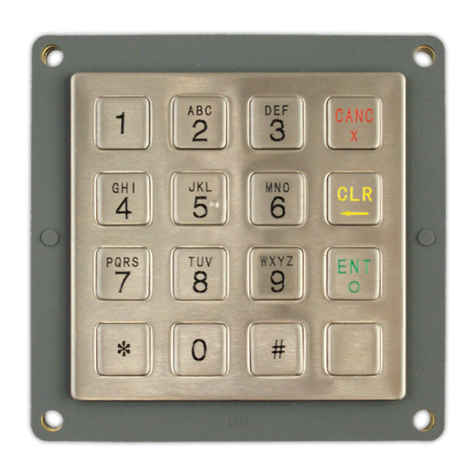
IDTECH
IDTECH SmartPIN K100 3.X Technical reference manual

Elektral
Elektral Tru-VEND Midi-Kafe Instructions for use & maintenance manual
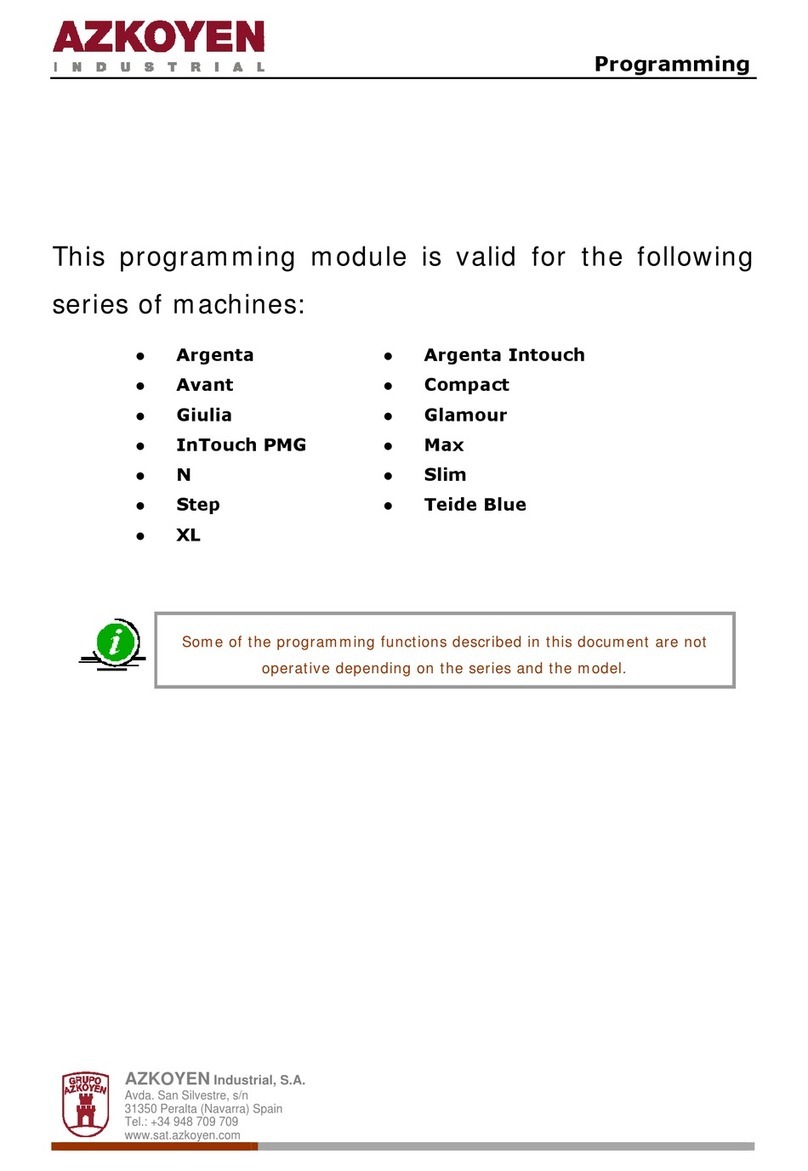
Azkoyen
Azkoyen Argenta Programming guide
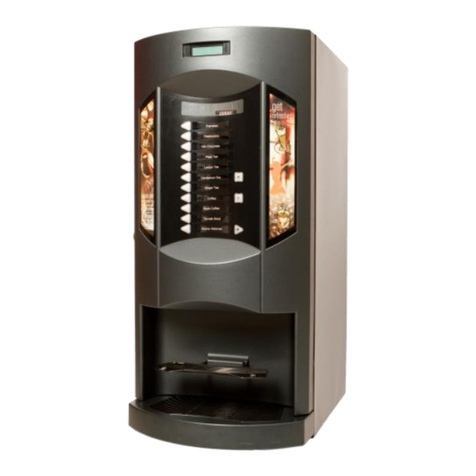
Godrej
Godrej Minifresh 2000 user manual

EVOCA
EVOCA Opera Touch Installation operation & maintenance
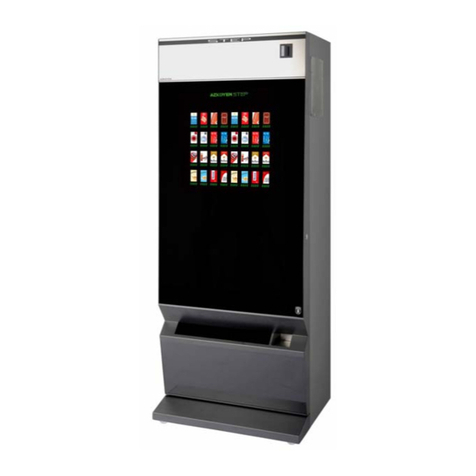
Azkoyen
Azkoyen STEP 74 technical information
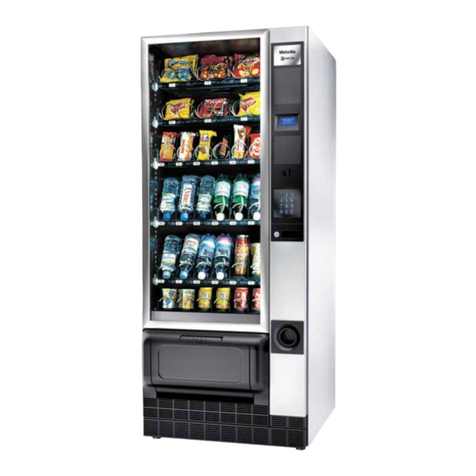
N&W Global Vending
N&W Global Vending Melodia Classic Installation operation & maintenance
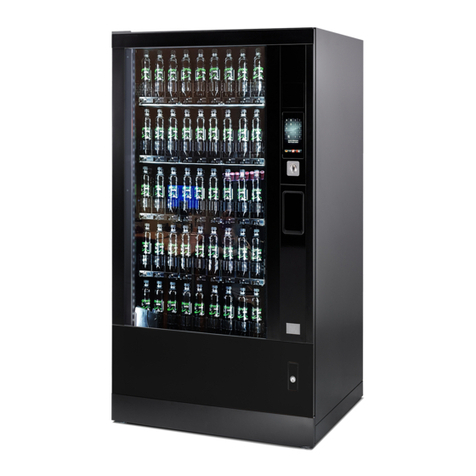
Westomatic
Westomatic Elevate quick start guide

Dixie Narco
Dixie Narco Pre SRS 90 SP troubleshooting guide
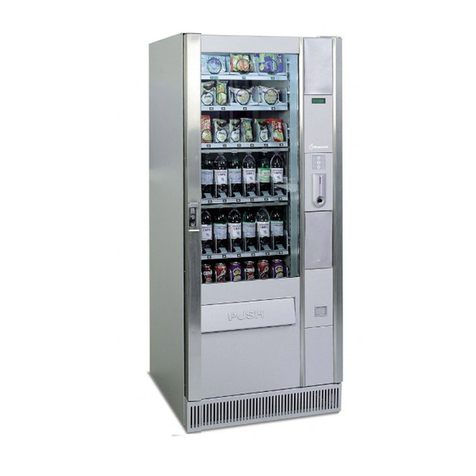
Bianchi
Bianchi VEGA 600 Installation and maintenance manual
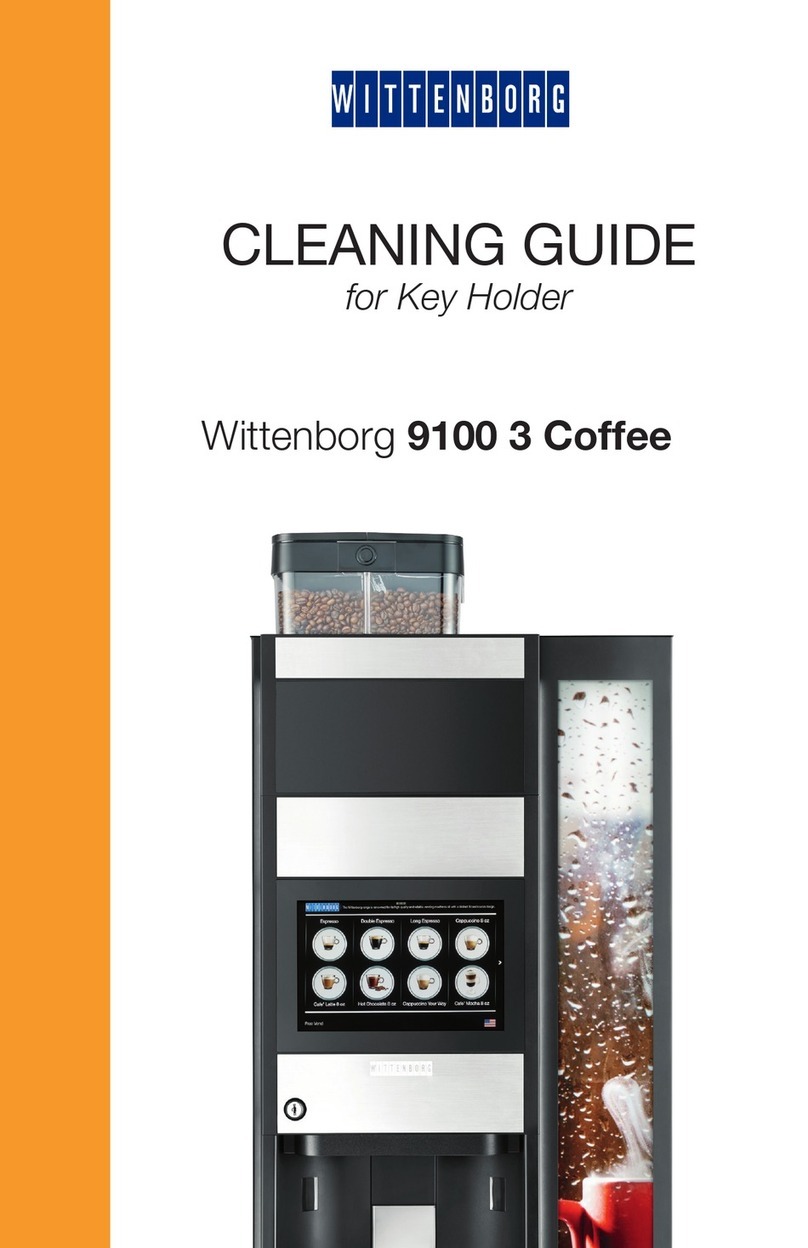
Wittenborg
Wittenborg 9100 3 Coffee Cleaning guide
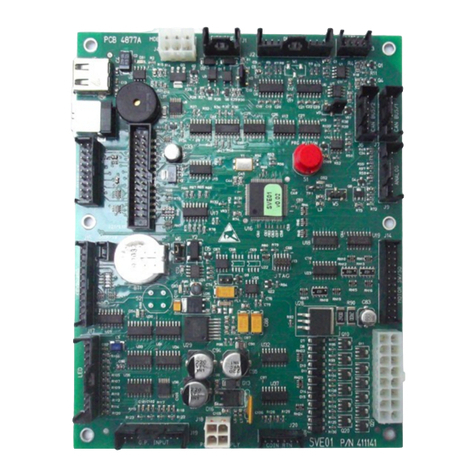
Vendo
Vendo SVE DL6 Programming manual
